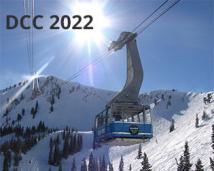
DCC 2022 Conference - The Data Compression Conference (DCC) is an international forum for current work on data compression and related applications. Both theoretical and experimental work are of interest. Visit the DCC 2022 website.

- Read more about Speeding up compact planar graphs by using shallower trees
- 3 comments
- Log in to post comments
- Categories:
 69 Views
69 Views
- Read more about On The Energy Statistics of Feature Maps in Pruning of Neural Networks with Skip-Connections
- Log in to post comments
We propose a new structured pruning framework for compressing Deep Neural Networks
(DNNs) with skip-connections, based on measuring the statistical dependency of hidden
layers and predicted outputs. The dependence measure defined by the energy statistics of
hidden layers serves as a model-free measure of information between the feature maps and
the output of the network. The estimated dependence measure is subsequently used to
prune a collection of redundant and uninformative layers. Model-freeness of our measure
- Categories:
 7 Views
7 Views
- Read more about A Benchmark of Entropy Coders for the Compression of Genome Sequencing Data
- 1 comment
- Log in to post comments
Genomic sequencing data contain three different data fields: read names, quality values, and nucleotide sequences. In this work, a variety of entropy encoders and compression algorithms were benchmarked in terms of compression-decompression rates and times separately for each data field as raw data from FASTQ files (implemented in the Fastq analysis script) and in MPEG-G uncompressed descriptor symbols decoded from MPEG-G bitstreams (implemented in the symbols analysis script).
- Categories:
 131 Views
131 Views
- Read more about MPEG-G Reference-Based Compression of Unaligned Reads Through Ultra-Fast Alignments
- 1 comment
- Log in to post comments
With the widespread application of next generation sequencing technologies, the volume of sequencing data became comparable to that of big data domains. The compression of sequencing reads (nucleotide sequences, quality values, read names), in both raw and aligned data, is a way to alleviate bandwidth, transfer, and storage requirements of genomics pipelines. ISO/IEC MPEG-G standardizes the compressed representation (i.e. storage and streaming) of structured, indexed sets of genomic sequencing data for both raw and aligned data.
- Categories:
 46 Views
46 Views
- Read more about Robust and efficient optimization scheme leading to KL transform
- Log in to post comments
In this paper we propose a novel and robust optimization scheme allowing to obtain the Karhunen-Lo`eve transform up to the permutation of row vectors. The introduced scheme is designed to be used in connection with artificial neural networks trained with the aid of gradient optimization techniques, and it involves two optimization criteria: (i) minimization of the mean squared error of signal reconstruction, (ii) minimization of the entropy related criterion.
- Categories:
 37 Views
37 Views
- Read more about Concurrent Encryption and Lossless Compression using Inversion Ranks
- Log in to post comments
dcc_202.pdf
- Categories:
 50 Views
50 Views
- Read more about Analysis of Lossless Compressors Applied to Integer and Floating-Point Astronomical Data
- 1 comment
- Log in to post comments
- Categories:
 55 Views
55 Views
- Read more about Applying Practical Parallel Grammar Compression to Large-scale Data
- Log in to post comments
Re-pair is a grammar-based compression algorithm. It achieves higher compression rates for text, graph, and tree. While Re-pair is a linear-time algorithm, it is slower than other general compression algorithms in practice. This is an obstacle in applying Re-pair to large-scale data. In this paper, we present Parallel Re-pair, a practical implementation that enables parallel processing of Re-pair. In Parallel Re-pair, Re-pair is executed in multiple threads for the divided block. Each thread shares a dictionary and it can output a single CFG.
- Categories:
 40 Views
40 Views
- Read more about Learning True Rate-Distortion-Optimization for End-To-End Image Compression
- Log in to post comments
- Categories:
 75 Views
75 Views
- Read more about Analysis on Compressed Domain: A Multi-Task Learning Approach
- 2 comments
- Log in to post comments
Image compression approaches based on deep learning have achieved remarkable success.
Existing studies mainly focus on human vision and machine analysis tasks taking reconstructed images as input.
- Categories:
 100 Views
100 Views